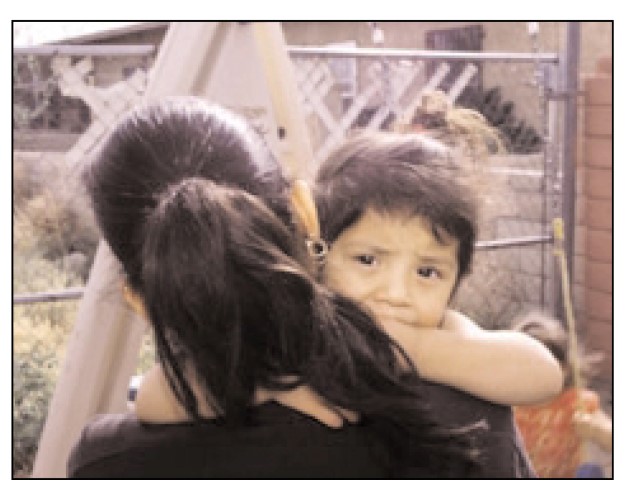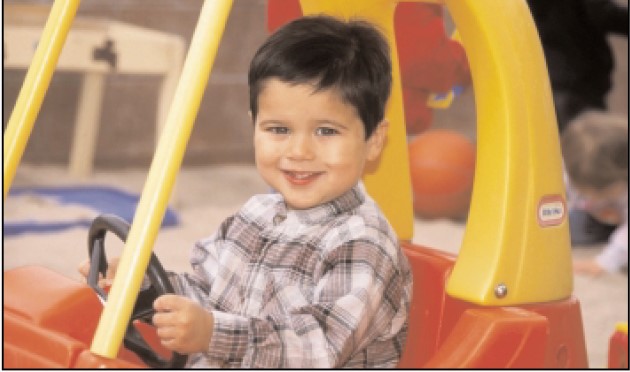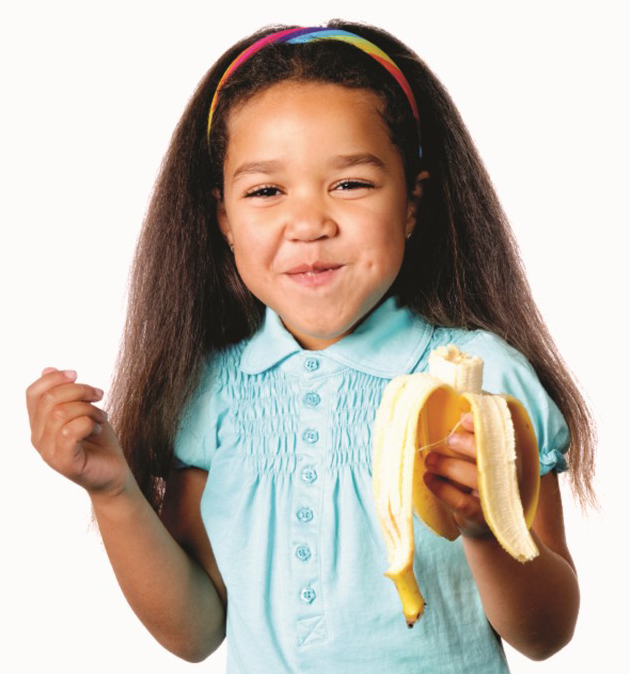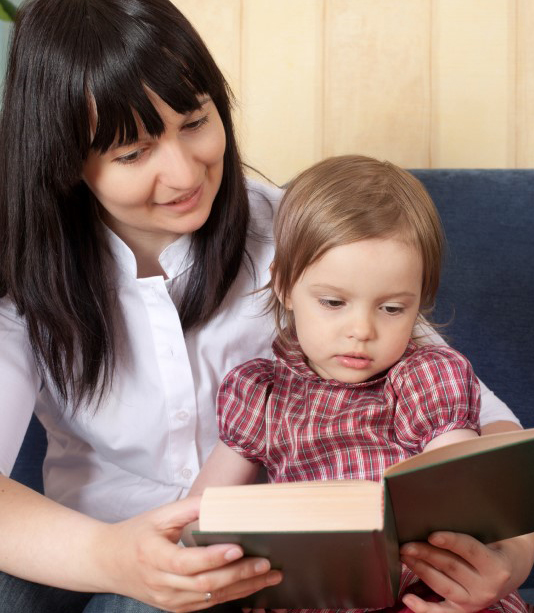3rd Year
MONTHS
27-28
3rd Year – Months 27-28
Your Toddler’s Battle for Independence Can Be a Win-Win

Your toddler’s growing independence may be a big source of stress. Sometimes, you may feel like you’re in a war with your child, trying to win every battle.
When you’re the one who wins, your child might fight back even harder. When they win, you might feel angry, defeated, or guilty. In some battles, you both lose and you both feel angry and unhappy.
Handle these battles in a way that lets both of you win. Maybe you can’t talk about compromise with a stubborn 2-year-old, but you can figure out how to end up with no one feeling like a loser. If you refuse to get caught up in a battle, then your child can’t lose and neither can you. For example:
- Your child demands that you read a story and you want them to take a nap. Maybe they can pick out the story before nap time, and you can read it when the nap is finished. Maybe you can read half the story before and half after the nap.
- Before going into the grocery store help your child think about what they can do by saying, “You can choose a vegetable or fruit to buy. We will eat it after shopping.”
With a little imagination and patience, you can find a “win-win” way. You’ll both feel better for it.
What’s It Like to Be 27-28 Months Old?

How I Talk
- I am starting to use plural words, like cats and dogs, instead of cat or dog.
- I am still saying “no” to show you how independent I am.
How I Grow
- I am starting to be able to do more complicated things with my hands, like turn door knobs.
- I am able to walk up and down stairs with some support.
- I am starting to jump up and down, maybe with one foot.
How I Understand
- I can match things together that look alike.
- I understand that some things are mine.
- I can identify pictures by pointing at them.
- I am starting to name pictures of things I know.
- I need to be reminded of the rules.
How I Feel
- I really like it when you talk to me in a kind way.
- I like to do things that please adults who care about me.
- I may resist your hugs and kisses, but I still like it when you show me you love me.
- I want to do more than I actually can. This can make me frustrated.
- I need you to have the same rules for me to follow all the time.
Some children do things earlier or later than described here. Most differences are normal. Focus on what your child can do and get excited about each new skill. If you notice that your child is lagging behind in one or more areas for several months, use this list to talk with your doctor about your child’s development.
Make-Believe Play Is Healthy
Children love to pretend they are someone who is important and powerful — like Superman, a doctor, a teacher, or a parent. This is a healthy part of growing up. It helps children practice for the future.
- Children often pretend they are someone else, usually an adult.
- Ask your child to imitate familiar things — like a flower, a tree, a train, a dog, a boat, or daddy driving a car.
- You can have fun together and encourage their creativity at the same time. Take turns being the flower, the tree, and so on.
- Find a big cardboard box large enough for your toddler to crawl inside. See if the grocery or appliance store will give you one. Remove any metal staples or sharp things that could hurt little ones.
- The box can become whatever your toddler wants it to be — a house, a spaceship, a boat, a cave, a fort, or all of these.
- Place the box so the open end is on the floor. Cut a door, windows, portholes, or whatever your toddler wants on the sides and back of the box. Let your toddler decorate (with crayons or colored paper) the play place. They may want you to write their name on the box or put a message or sign on it.
Let Your Child Choose to Be Left-Handed or Right-Handed
Question: My daughter feeds herself and reaches for toys with her left hand. I don’t want her to be left-handed, but I’ve heard that if I try to keep her from using her left hand, it may cause problems. Should I try to make her use her right hand?
Answer: Most children change handedness several times before settling down to their preference. The key word is preference. Most children settle into a left or right hand preference, but some have equal skill in both left and right hands throughout their lives.
- Don’t try to make them use their right hand. Preference in using hands, feet, and eyes is already present in the child’s brain at birth. If you pressure your child to change their preference, they may become confused.
- Forcing them to change might also affect their learning and self-confidence.
Make Learning Fun by Playing Games and Talking with Your Child
How would you like to start a school in your home? This school is not only in your home — it is your home, your family, and your day-to-day activities.
You might say, “But I don’t know how to teach. ”You don’t need a teaching degree or years of experience. You just need to remember your ABCs:
- A child’s first and most important teachers are their parents.
- Be alert to the new situations your child faces each day.
- Create short, simple learning games many times during the day.
The secret to being a great teacher is to keep learning fun! Teach by playing games and talking with your child in a friendly way.

- Teach colors: As you set the table, talk about the red dishes, the blue tablecloth. As you sort the clothes, talk about the blue jeans, the white shirt. Talk about shapes of toys or furnishings in your home — the round mirror, the square table.
- Teach about things that are alike and things that are different by helping your child sort spoons and forks in the drawer.
- Teach about language and books by showing pictures and reading short stories to your child again, again, and again. Talk with them about the story.
You are your child’s first teacher. The lessons you teach now will help them learn even more when they start preschool and kindergarten. Children who have been taught at home enjoy learning and usually learn faster in school.
It’s Normal for Toddlers to Say They Love You — AND They Hate You
 Toddlers show you and tell you that they love you. Welcome and enjoy these feelings. You’ll want to show your affection toward your toddler too, with words and hugs.
Toddlers show you and tell you that they love you. Welcome and enjoy these feelings. You’ll want to show your affection toward your toddler too, with words and hugs.
Toddlers sometimes say and show that they dislike you. These angry words and actions can be hard to accept. It is much nicer to hear “I love you” than “I hate you,” but both kinds of feelings are common with toddlers. These expressions of negative feelings are part of growing up.
- Your toddler’s anger is normal and it will pass. Show your child that you care for them even when they are angry, and that angry feelings are OK. Say, “I know you’re mad right now. It’s OK to tell me you feel angry.”
- Firmly prevent them from turning their feelings into angry actions —such as biting, kicking, and hitting.
- Do not give in to unreasonable demands just to prevent angry outbursts. Talk to them when they’re calmer and find out what is making them feel angry or mad.
- Be patient; the good and loving relationship you have with your toddler will keep angry times short.
Toddlers Can Be Picky Eaters
 Toddlers often don’t like to try new foods. Like many of us, they like things that they know about, and resist things that are new.
Toddlers often don’t like to try new foods. Like many of us, they like things that they know about, and resist things that are new.
You can help your child learn to like a variety of foods by continuing to serve them during family meals. Your toddler may not eat the foods, but seeing them on the table, and watching you eat them, will help them feel comfortable tasting them.
- Do not force your toddler to eat all the food on their plate. Pressure to eat can cause your toddler to eat too much. Pressuring can also make your child dislike the food when they get older.
- Eat together as a family. Having regular mealtimes creates a nice time for children to enjoy trying new foods. It also lets your toddler see you eating the foods you would like them to eat.
- Toddlers like to show how independent they are. Letting them choose foods can help them feel independent and avoid struggles. If you offer a choice of foods, limit the number of choices to two healthy options. Resist giving in if your toddler argues. Continue to offer the two choices — like an apple or an orange. They can decide which one, if any, they want.
- Let toddlers serve themselves. At this age, toddlers’ hand and arm muscles are developing. They are capable of lifting and scooping with child sized utensils. Serving themselves from a bowl can help them feel independent.
- Resist becoming a “short order cook.” When your toddler resists eating something you have prepared for the family meal, do not prepare another meal just for your toddler. Instead of giving in to your toddler’s demands — such as eating macaroni and cheese for every meal — continue offering regular meal choices to your toddler.
Manage Stress by Making a “To Do” List
Does it seem like you have too much to do and not enough time? Here are some ideas:
- Make a list of everything you want to get done for one day or one week. Decide which things are most important, and which ones can wait — or don’t have to be done at all. Be reasonable about what you can do in the time you have.
- Write out a schedule, so you can aim for a time to finish each task. Think about how you’ll do the task in the time you have.
- Group all the chores that require going out, or the ones that require someone else to care for your child.
- Figure out how much you really can do in the time you have. Make sure you build in time for the most important people in your life: you, your partner and your child.
Prevent Choking by Removing Small Objects
Your child will explore their world by putting everything they can grab into their mouth. Here are some ways you can help your child avoid choking:
- Never leave small things in your child’s reach even for a moment.
- Do not feed your child hard pieces of food.
- Remove small objects that may be on the floor —so your child can’t get to them when he’s playing.
- Do not let your child run with food in their mouth.
Help Your Child Grow Up Healthy and Ready for Success
Your toddler is into everything, and you are busy chasing, protecting, and guiding them. With all this activity and stress it may be hard to remember that these first three years are some of the most important times in your child’s life.
What you are doing now helps your child grow up healthy and ready for success.
- Take time out when you can and share child care with others when you need a break.
- Enjoy your child’s development and celebrate their accomplishments with them.
- Reward yourselves for your successes — and don’t be hard on yourselves for mistakes. All parents make them.
- For now, do all you can to make the most of these important years.

Food Rewards Can Lead To a Poor Diet — High in Sugar and Fat
“If you behave at the shoe store, I’ll buy you a candy bar.” “Be a good girl at grandma’s house and you’ll get an ice cream cone.” It is tempting to use food to try to control your child’s behavior, but it can backfire. Soon your child believes that desirable foods are the ones used as rewards or bribes.
These foods are almost always high in sugar or fat —or both — like candies, cakes, cookies, chips, and ice cream. As your child gets older, they will have more control over what they eat. If they choose a lot of high sugar, high fat foods, then their diet will not keep them healthy.
Parents often mean well when they say, “You can’t have dessert until you finish all of your vegetables.” They think they are doing something good by getting their child to eat the vegetables. But your child hears, “You have to eat the ‘bad’ vegetables in order to get the ‘good’ dessert.”
You don’t want your child to think of any healthy foods as ‘bad.’ Let them have dessert. You can make the dessert something low in fat and sugar — like a fruit juice popsicle.

TIPS:
For help on choosing a variety of foods, visit https://www.myplate.gov/life-stages/toddlers.
- Do not use any food — even healthy food — as a bribe or reward.
- Encourage your child to eat a wide variety of foods, so they will get all the nutrients they need for growth and health.
- Let them know when you are pleased with what they do. “You didn’t fuss in the shoe store. You were patient.” This is a better reward than candy because it helps your child learn how to behave.
Criticizing Accidents Can Make Toilet Training Last Longer
Learning to use the toilet is a big step. Most toddlers learn to use the toilet between 2 and 3 years of age. Toddlers start using the toilet during the day, and still need to wear diapers. As they get better at knowing what it feels like to have to go to the toilet, they start to stay dry during the day. But they will still need diapers at night.
Toilet training will have ups and downs. Some days your toddler will be very good at knowing they need to go. Other days, your toddler may have several accidents. Let them learn at their own pace.
- Wait until your toddler is ready. Look for signs — like being uncomfortable in a wet or dirty diaper.
- Avoid forcing your toddler to use the toilet or criticizing accidents. When a toddler feels pressured or embarrassed, it can take longer to toilet train.
- Show your toddler where the toilet is and how to get there.
- Practice getting on and off the toilet. Let your toddler sit on the toilet when they are interested, even if they don’t go.
- Encourage your toddler to tell you when they are wet or dirty.
- When you change their diaper tell them why. “We have to change you because you made your diaper wet.”
- Dress your toddler in loose-fitting clothes that pull off easily.
- Be patient. Praise your toddler for each step: telling you it is time to go, sitting on potty, etc.
Choose Books with Colorful Pictures and Few Pages
- Choose topics that your child knows about.
- The plot should be simple. Some books have only pictures and labels on them. These can be fun for toddlers. Your child will enjoy turning the pages with you, seeing the pictures, and talking to you about them.
- The words in the book should be simple and clear, and there should be just a few words on each page. Toddlers enjoy books with words that are fun to say and are repeated like — “Tick tock said the clock; tick tock, tick tock.”
- The pictures should be large, clear, and brightly colored. Toddlers often like drawings better than photographs because they are easier to understand.
- See if you can find sturdy cardboard books. Your child can turn the pages of these books more easily and the pages will not tear.

Toddlers in Quality Child Care Do Better in School
Look for a program that is safe, nurturing, and has lots of learning opportunities. Look for:
- Teachers who talk and listen to the children — which helps your toddler learn language skills.
- Teachers who play with the children —making it feel safe for your toddler to learn social skills.
- Many different kinds of play — building, reading, sorting, pretending, and drawing.
- No T.V. for toddlers. If there is television, make sure there are limits on time and that the shows are right for your toddler’s age.
- Rules and routines which are easy to follow. Learning to follow rules and routines will help your toddler be ready for school.
- Chances to visit the program before you sign up and drop in after your child is enrolled. Don’t be afraid to ask questions.